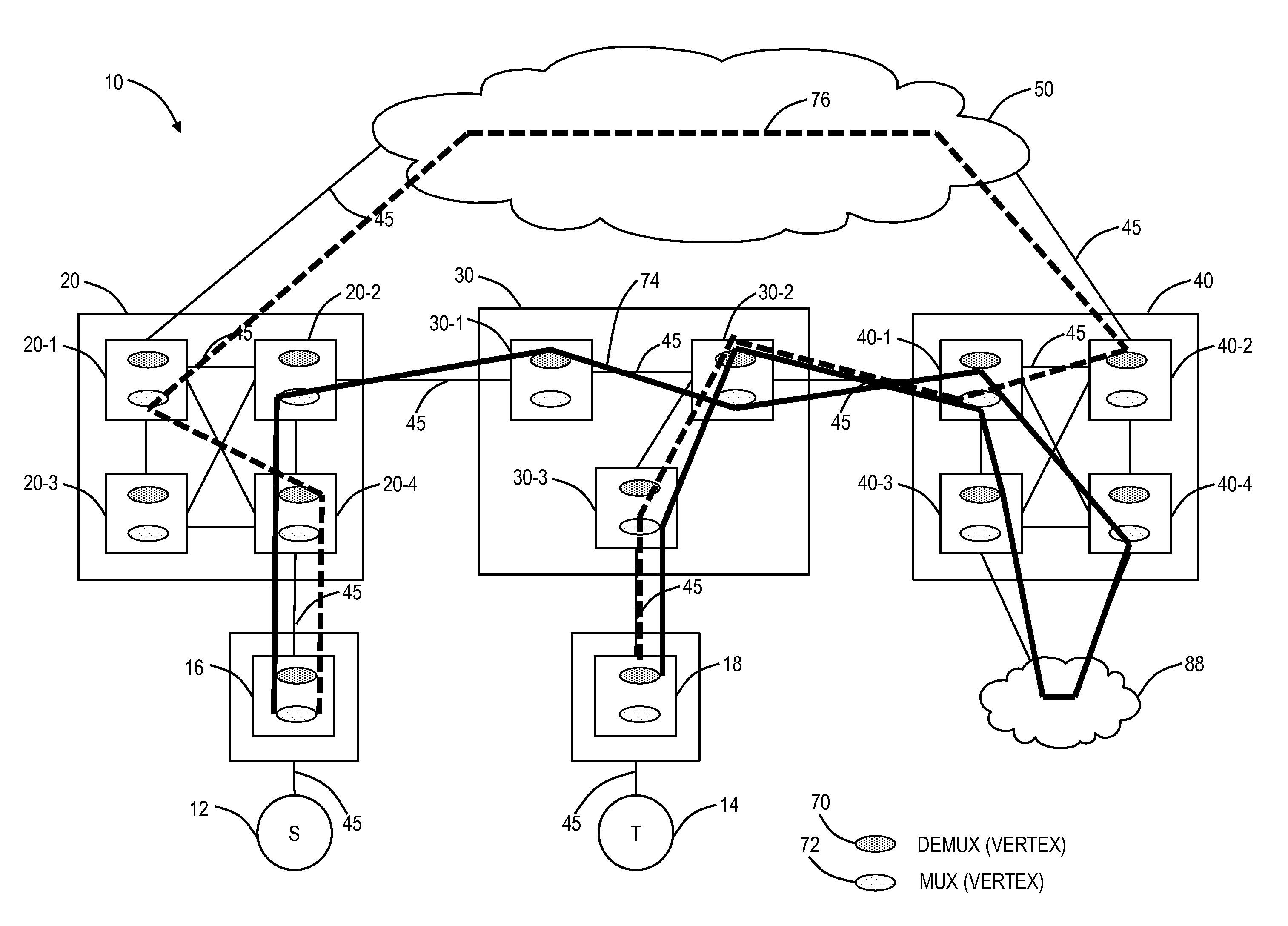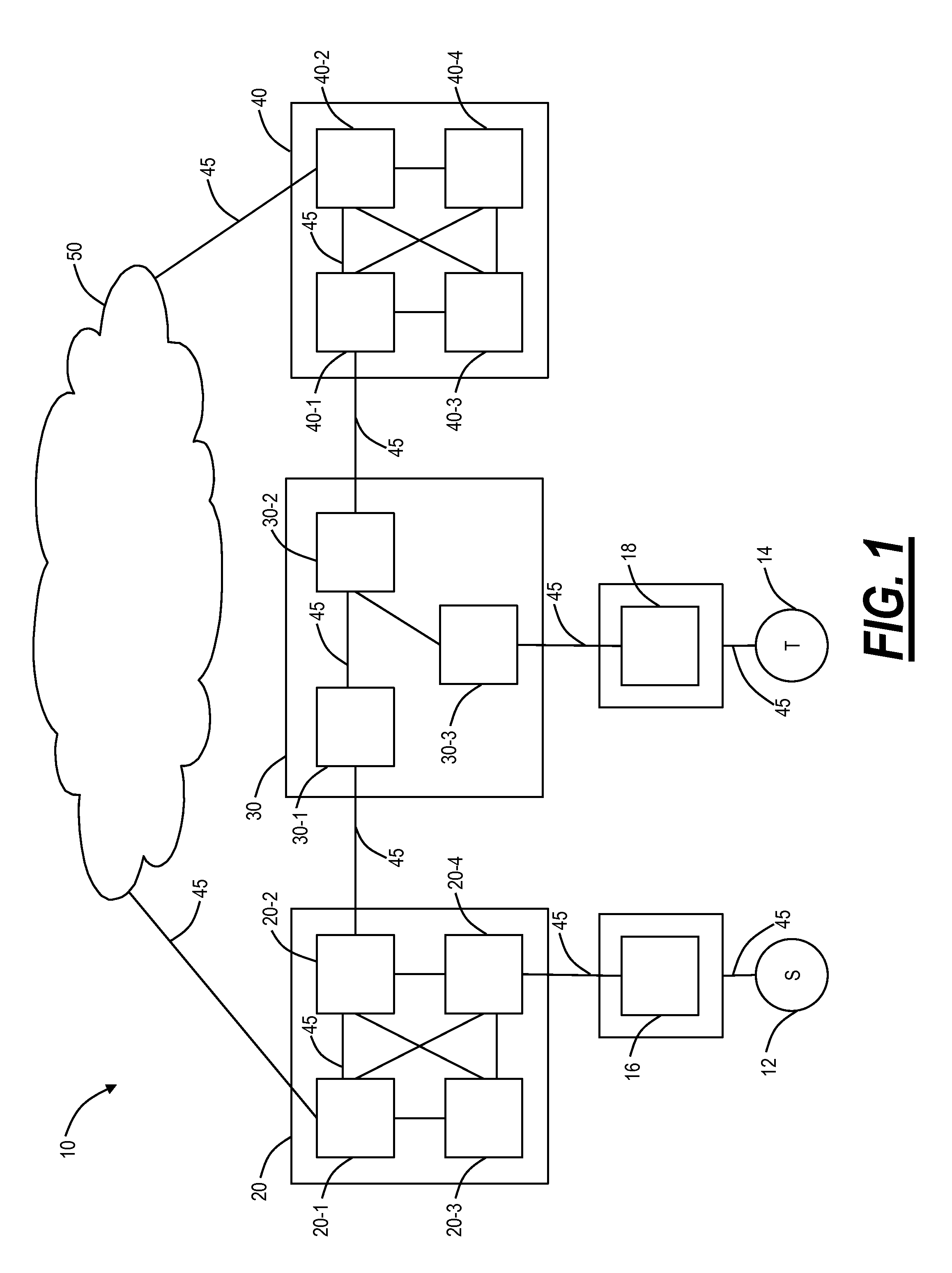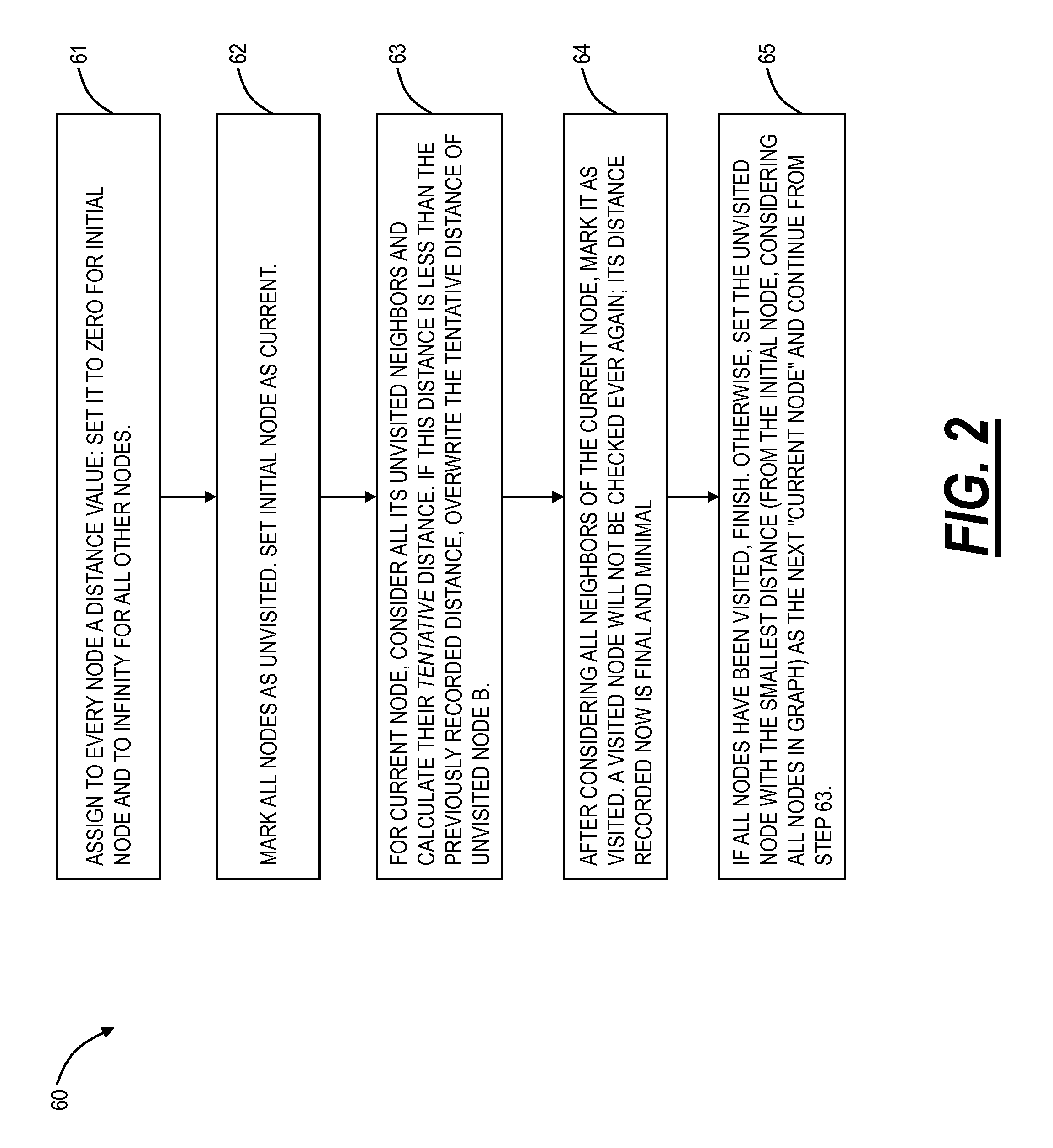Shortest path routing systems and methods for networks with non-fully meshed vertices
a network and shortest path technology, applied in the field of network network shortest path routing systems and methods, can solve the problems of inherently unidirectional technology, lack of leverage of domain specific information (i.e. roadm behavior) to achieve a fast routing solution
- Summary
- Abstract
- Description
- Claims
- Application Information
AI Technical Summary
Benefits of technology
Problems solved by technology
Method used
Image
Examples
Embodiment Construction
[0015]In various exemplary embodiments, the present disclosure relates to shortest path routing systems and methods for networks with non-fully meshed vertices or nodes. The systems and methods may include a shortest path routing method in a network with non-fully meshed vertices, a network with non-fully meshed vertices, and a system for implementing the shortest path routing methods. The shortest path routing systems and methods include modifications to the Dijkstra algorithm to more accurately model a network, such as an optical or photonic network. In an exemplary embodiment, the Dijkstra algorithm is modified to represent degrees at a site with an ingress vertex (e.g., a demultiplexer) and an egress vertex (e.g., a multiplexer). In another exemplary embodiment, in addition to representing degrees as ingress and egress vertices, the Dijkstra algorithm is modified to maintain knowledge of previously visited degrees to prevent revisiting a same degree in determining a shortest pat...
PUM
 Login to View More
Login to View More Abstract
Description
Claims
Application Information
 Login to View More
Login to View More - R&D
- Intellectual Property
- Life Sciences
- Materials
- Tech Scout
- Unparalleled Data Quality
- Higher Quality Content
- 60% Fewer Hallucinations
Browse by: Latest US Patents, China's latest patents, Technical Efficacy Thesaurus, Application Domain, Technology Topic, Popular Technical Reports.
© 2025 PatSnap. All rights reserved.Legal|Privacy policy|Modern Slavery Act Transparency Statement|Sitemap|About US| Contact US: help@patsnap.com



